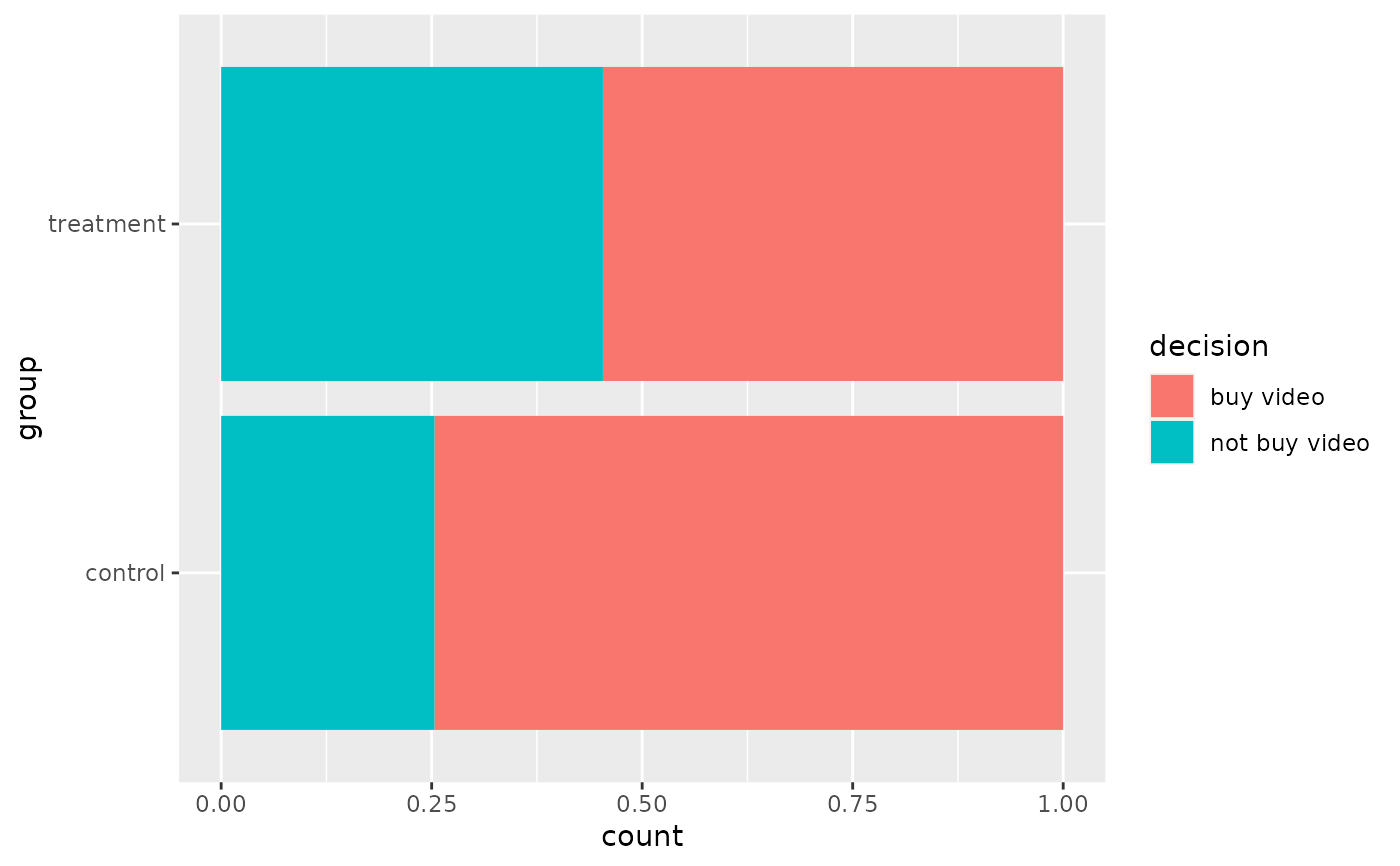In a study on opportunity cost, 150 students were given the following statement: "Imagine that you have been saving some extra money on the side to make some purchases, and on your most recent visit to the video store you come across a special sale on a new video. This video is one with your favorite actor or actress, and your favorite type of movie (such as a comedy, drama, thriller, etc.). This particular video that you are considering is one you have been thinking about buying for a long time. It is available for a special sale price of $14.99. What would you do in this situation? Please circle one of the options below." Half of the students were given the following two options: (A) Buy this entertaining video. (B) Not buy this entertaining video. The other half were given the following two options (note the modified option B): (A) Buy this entertaining video. (B) Not buy this entertaining video. Keep the $14.99 for other purchases. The results of this study are in this dataset.
Format
A data frame with 150 observations on the following 2 variables.
- group
a factor with levels
controlandtreatment- decision
a factor with levels
buy videoandnot buy video

